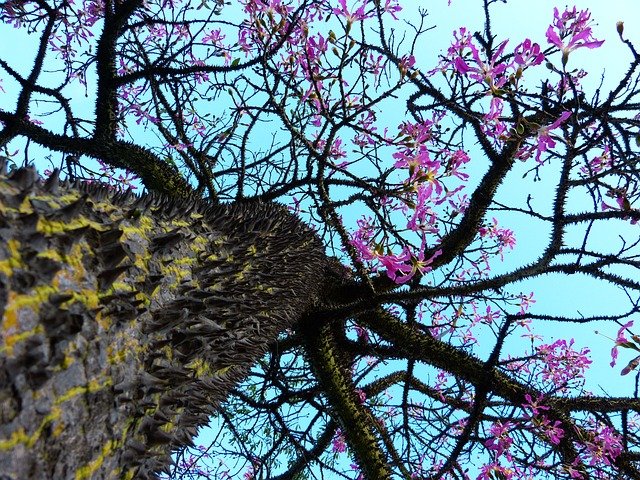Hello dear friends of the Steemit community. You've probably seen pictures of lush tropical rainforests teeming with plant and animal life. Towering trees form the canopy layer, their branches intertwining overhead to create a shelter for all the creatures that call the rainforest home. But have you ever wondered about the amazing diversity of tree species found in these equatorial ecosystems? Today I wanted to shine a spotlight on 5 trees commonly seen in tropical rainforests around the world and tell you a bit about their uses and importance.

Let's start with the Kapok tree. A staple of Southeast Asian rainforests, the Kapok tree can reach heights over 150 feet tall. Its most distinctive feature is the cottony fiber encasing its seeds - this fiber, known as kapok, has extremely low density and buoyancy, making it excellent for use in life jackets, cushions, and insulation. Kapok fiber is also hypoallergenic and mold-resistant. In many rainforest communities, kapok trees provide both shelter and income as the fiber is harvested.

Heading over to Central and South America, we come upon the Mahogany tree. This elegant hardwood species is prized for its beautiful grain patterns and versatility. Mahogany was historically used extensively for shipbuilding, furniture, paneling, and flooring. However, overexploitation has led to it becoming an endangered timber. Many communities today rely on sustainable harvesting of mahogany, which provides income while allowing the trees and forest to recover. The reddish-brown wood is also valued in acoustic instruments like guitars for its resonance.

Shifting our focus to West Africa, we find the Baobab tree towering over the savanna landscape. Often described as the "upside-down tree" due to its broad, short trunk and widespread branches, the baobab is easily identifiable. Its thick bark holds vast stores of water that allows it to survive lengthy dry seasons. Baobab fruit pulp is eaten fresh or powdered, while its leaves are used as a vegetable. The tree's bark fibers are turned into rope, its seeds are pressed for their oil, and its hollow trunks often act as wells or storage areas for local villages.
Now let's head back to Asia with a look at the Rain tree. Don't let its delicate appearance fool you - the Rain tree grows rapidly and can reach 100 feet tall. Native to Sri Lanka and Southeast Asia, it's commonly found at forest edges and provides dense canopy cover. Its drooping clusters of pink flowers attract birds and bats for pollination. Rain tree bark yields strong fibers traditionally used for fishing nets, rope, and cloth. Its heartwood is also durable and used for structures, boatbuilding, and tool handles.
Our last highlight is a major player throughout Central and South America - the Brazilwood tree. Considered the national tree of Brazil, the Brazilwood is quite large with buttressed trunks up to 20 feet around. It has reddish sapwood that was historically highly prized as a dye, giving its name to the country of Brazil. Indigenous peoples relied on Brazilwood sap to produce red body paint for rituals and ceremonies. In many Amazon communities today, the Brazilwood continues to be harvested sustainably as a source of local income through logging and forest products.
As you can see, tropical rainforests globally are home to an incredible diversity of large tree species, each with distinct characteristics and uses important to both human communities and forest ecology. Getting to know some of the major players like kapok, mahogany, baobab, rain tree, and Brazilwood gives you a deeper appreciation for the intricate relationships and interdependencies found within these vital ecosystems. The next time you see pictures of lush tropical jungles with towering trunks disappearing into the treetops, you'll better understand the amazing stories hiding amongst the branches.